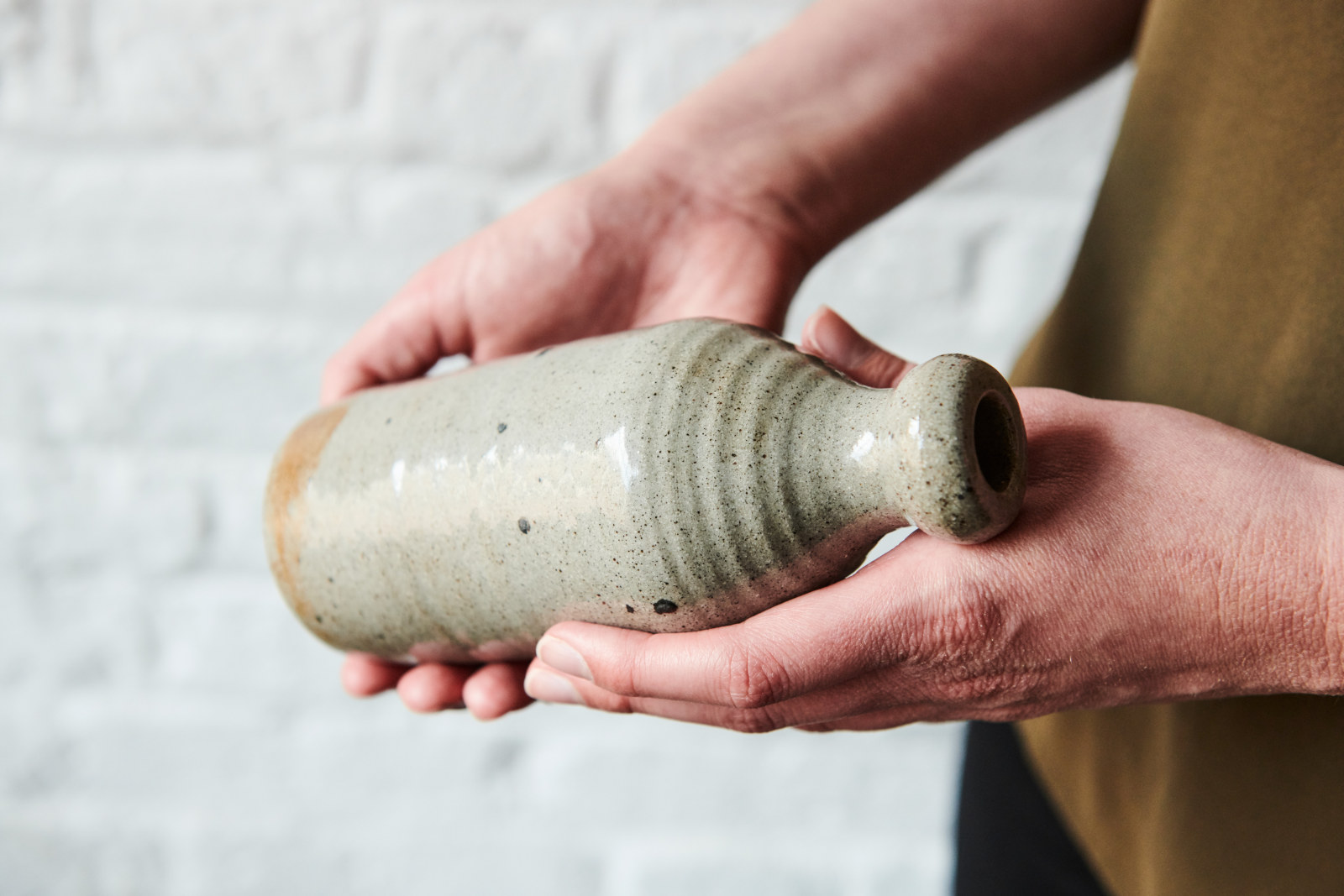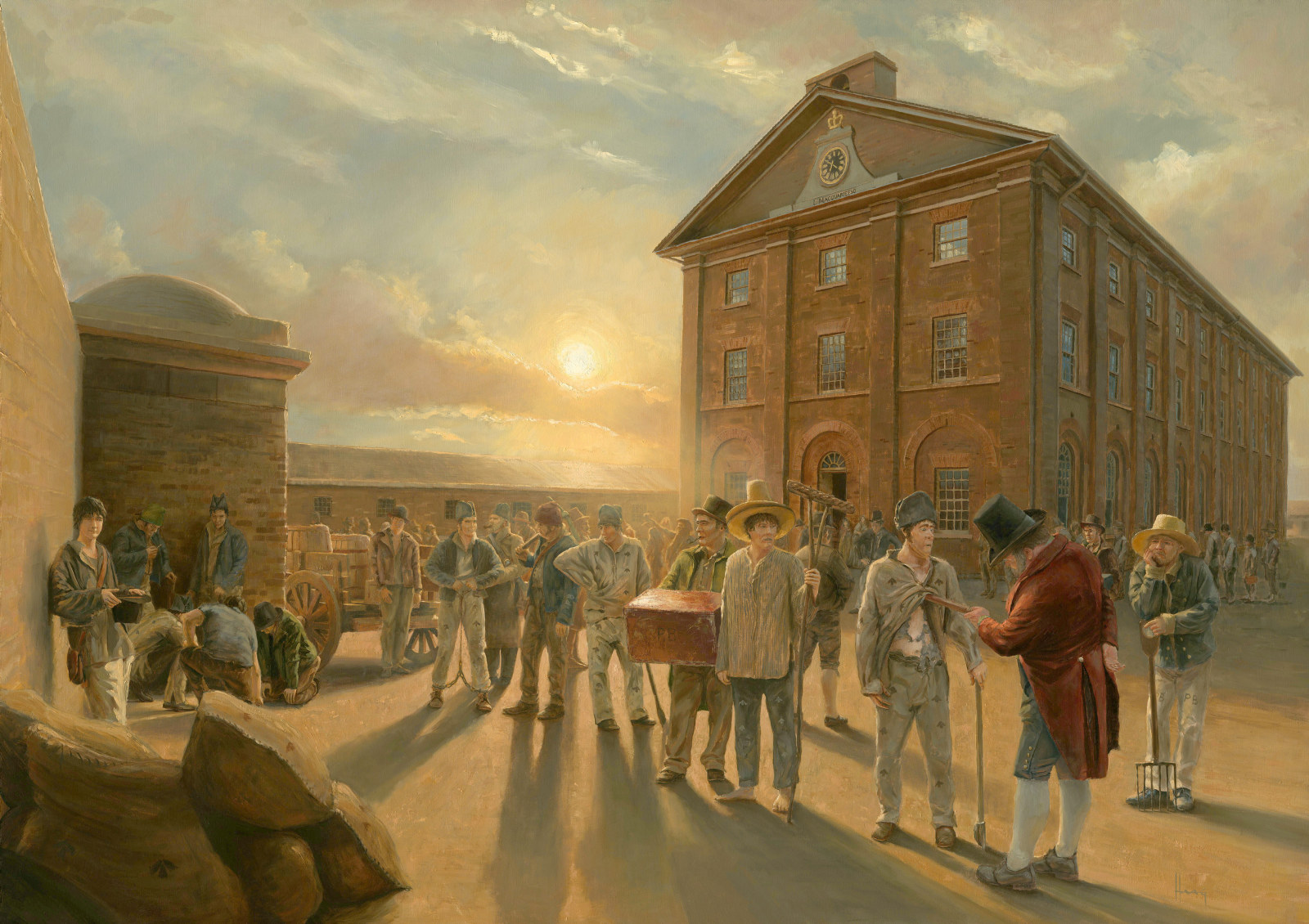‘Slop’ clothing
Each convict man and woman got a basic set of garments, issued twice a year from the government’s Commissariat Store. The uniforms were mainly one size fits all, so they were loose-fitting and sloppy, and known as ‘slop’ clothing.
The government wanted the convicts to look uniform and identifiable, but shortages in supplies meant that a hodgepodge of colours and types of clothes was issued. Some fabric and completed garments were supplied from England, but these were supplemented with cloth and garments made in the colony. Woollen ‘Parramatta cloth’ and flax linen for convict clothing were made by women convicts at the Parramatta Female Factory. They were also made into clothing there, and by male convicts at the Hyde Park Barracks.
Convicts who reoffended in the colony and were sentenced to work on iron gangs were required to wear ‘punishment suits’. The pants had side buttons to allow them to be put on and taken off while leg-irons remained fixed to the men’s ankles. Men wearing these suits were called ‘canaries’ and ‘magpies’, because of the half bright yellow, half black/brown colouring of the fabric. It was a public humiliation to have to wear this clown-like clothing.
The shortage of clothing and other goods gave rise to a thriving black market in Sydney, so every separate part of each garment was stamped with a broad arrow to prevent clothes from being unpicked, reconstructed and sold on. Every item of convict clothing was also daubed with the initials ‘P B’, for Prisoners’ Barracks, or ‘C B’, for Carters’ Barracks, depending on where the convicts were stationed. Convicts working for the government were supposed to change into clean clothes once or twice a week.
This content was compiled for the Convict Sydney website from existing information such as MHNSW exhibition text and other researched material.
Published on
Convicts
Browse all
Learning resources
Explore our range of online resources designed by teachers to support student learning in the classroom or at home

Convict Sydney
Convict Sydney
From a struggling convict encampment to a thriving Pacific seaport, a city takes shape

Convict Sydney
1801 - Day in the life of a convict
In the young colony, there was no prisoner’s barrack - the bush and sea were the walls of the convicts’ prison

Resource
What food did the convicts eat?
In 1820, the convicts living at the Hyde Park Barracks would have been woken at sunrise by the ringing of a bell in the yard